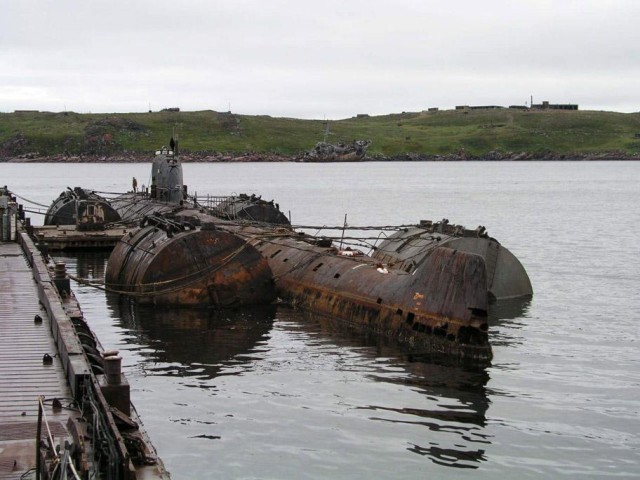
New Managing Director for Bellona Norway
The Board of the Bellona Foundation has appointed former Minister of Climate and the Environment Sveinung Rotevatn as Managing Director of Bellona No...
News

Publish date: September 20, 2002
Written by: Thomas Nilsen
News
Six Years After Bellona’s Report
This August six years have passed since Bellona published a report about nuclear safety issues in the Russian Northern Fleet. The work on the report resulted in criminal prosecution of one of its co-authors, Aleksandr Nikitin, who was charged with high treason. Nikitin was fully acquitted and the work to solve the problems described in the report is underway.
In 1996, the report described an appalling situation: retired submarines with nuclear fuel in their reactors laid up along the coast of the Kola Peninsula, huge volumes of radioactive waste stored in open sites.
Today, the USA, EU and Norway are co-operating closely with Russia to solve those major challenges in the northern areas.
Russian government has transferred a part of the responsibility to secure nuclear waste from the Defence Ministry to the semi-civilian Ministry for Nuclear Energy, or Minatom. Although the technical and economic assistance is still being hampered by bureaucratic roadblocks, but everything functions a long way better than it was back in 1996.
34 submarines still in operation
In 1996, there were 67 submarines in operation in the Northern Fleet. Today this number has come down to 34. The Northern Fleet operates 12 ballistic missile submarines (SSBNs), 22 guided cruise missile submarines (SSGNs) and torpedo attack submarines (SSNs). It is expected that five SSBNs will be taken out of operation during the coming couple of years, while new generation of strategic submarines is under construction in Severodvinsk. The first SSBN of new generation, Borey class, is to enter service in 2007, given funding is in place.
The last arms reduction treaty between Russia and the US called Strategic Offensive Reduction Treaty, or SORT, is unlikely to put lower limits on the number of strategic submarines in the Northern Fleet than Russia has already decided to have in the coming 10 to 15 years. The agreement, however, will reduce the number of deployed nuclear warheads down to 1,700 by the year 2007.
Russia is expecting to get even stronger international aid to scrap retired nuclear submarines. At the G8 summit this spring in Canada, President Putin was promised an aid package of $20 billion over 10 years to increase the nuclear security and safety. The initiatives to deal with the retired submarines are the most formulated for the time being.
Delta-IVs to stay in operation until 2015
Through the AMEC co-operation Severodvinsk shipyard Zvezdochka produced 400 containers for solid radioactive waste. The containers are designed for radioactive waste, which are stored unprotected at various naval bases at the Kola Peninsula. The containers are still not in use and rest in Severodvinsk. The reason for that is that there is a lack of a facility to compact the waste, reducing their volume.
There is also work underway to find the best place for radwaste repository. Among the proposed sites are Novaya Zemlya, Arkhangelsk region and the Kola Peninsula.
After years of research at Novaya Zemlya, Russian Nuclear Energy Minister said this summer that it would be more feasible to build such repository at the Kola Peninsula.

The Board of the Bellona Foundation has appointed former Minister of Climate and the Environment Sveinung Rotevatn as Managing Director of Bellona No...

Økokrim, Norway’s authority for investigating and prosecuting economic and environmental crime, has imposed a record fine on Equinor following a comp...

Our op-ed originally appeared in The Moscow Times. For more than three decades, Russia has been burdened with the remains of the Soviet ...

The United Nation’s COP30 global climate negotiations in Belém, Brazil ended this weekend with a watered-down resolution that failed to halt deforest...